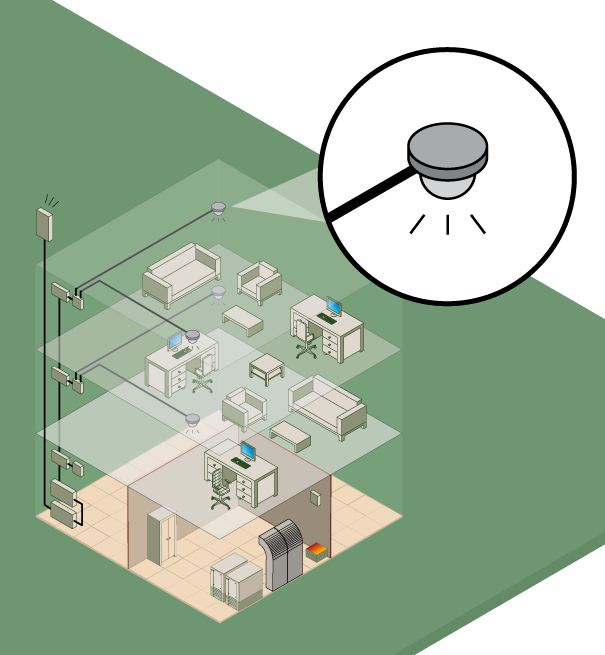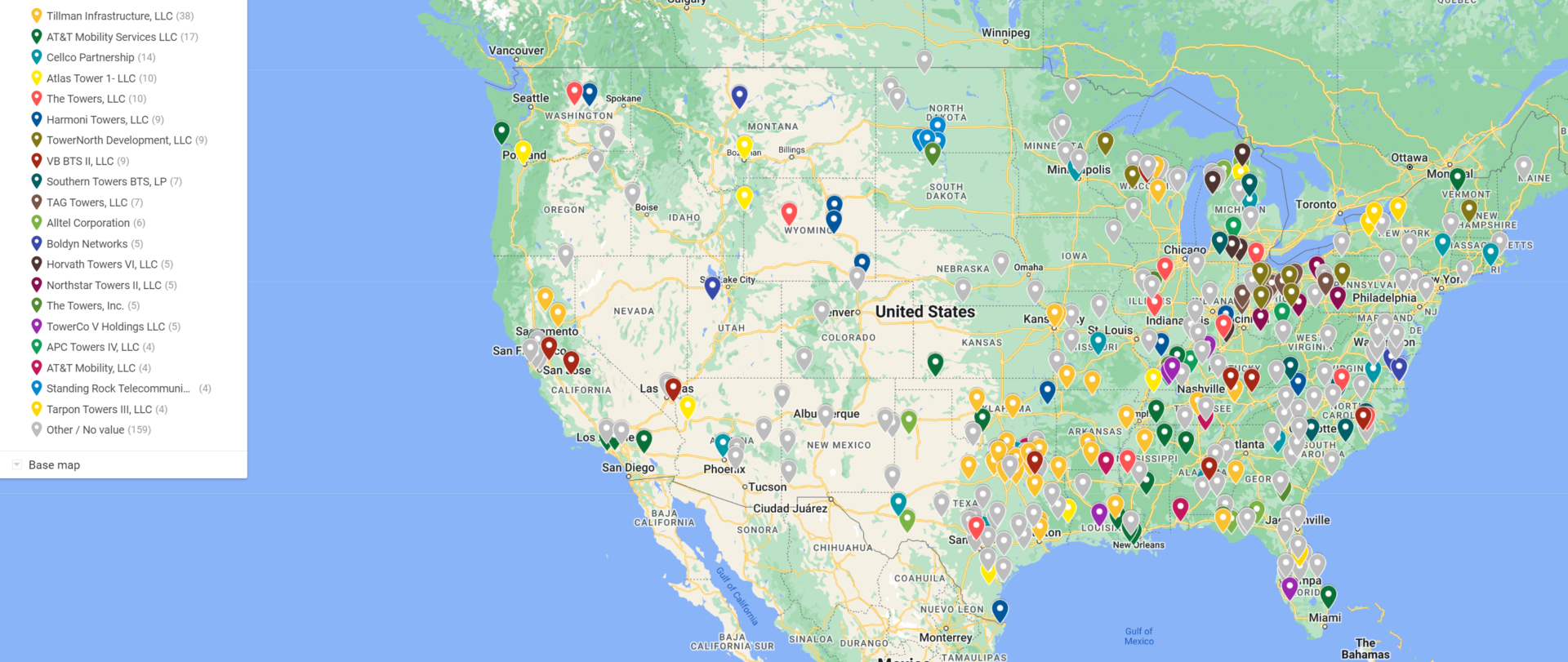Update on 2022 in Wireless- analysis and expectations.
Now that we have passed the midpoint of 2023, we thought it might be helpful to share our observations from the first half of 2023 and our expectations for the latter half.
First, we start with wireless carrier and tower company activity:
AT&T
-
-
- AT&T is deploying 5G (via C-Band spectrum) faster than expected. They allege that they are six months ahead of schedule. Primarily, they are doing this by modifying existing cell sites to incorporate C-Band spectrum.
- As a result, small cell development activity has been significantly curtailed. AT&T has told one of our clients that their small cell project is on hold for the foreseeable future due to the focus on macrocell 5G.
- We continue to see build-to-suit activity for mid-sized tower companies. Build-to-suit is where the tower company builds a tower for AT&T, and AT&T leases space on it once constructed.
- We expect to see more of the same for the remainder of 2022 and into 2023.
-
T-Mobile
-
-
- There has been a significant increase in lease termination (or non-renewal) notices from T-Mobile for Sprint sites. If you have a Sprint site that hasn’t been modified to accommodate T-Mobile equipment, chances are you will be getting one of these notices.
- Most of the termination activity will occur by the year’s end.
- We see increased new site build activity – primarily through build-to-suit contracts with tower companies. T-Mobile is filling in coverage gaps between their existing sites where their 2.5Ghz spectrum isn’t capable of covering.
- T-Mobile is also “hardening” sites – adding generators and fuel storage to help the sites last longer in the event of a power outage or emergency. Typically, these requests include expanding the ground lease area, which translates to additional revenue for site owners with T-Mobile leases.
- By the end of the year, T-Mobile should be nearly complete with its 2.5Ghz overlay work. Capex for 2023 should be slightly reduced as a result.
-
Verizon
-
-
- Verizon prioritized C-Band modifications to their existing macrocells in the first part of the year. We estimate that Verizon completed 65-75% of these modifications and should be closer to completion by the end of this year with some overhand into 2023.
- Verizon continues to build new cell sites to “infill” between existing cell sites. Because C-Band frequencies cover less area than older cellular or PCS frequencies, Verizon needs sites in between existing sites to fill in the gaps.
-
DISH
-
-
- The first half of the year saw DISH building out sites in approximately 30 markets to meet the June 2022 deadline to meet an FCC/DOJ requirement to build out service to 20% of the population in the US. They met this relatively easy-to-hit deadline. The next deadline will be more difficult for DISH to meet. By June of 2023, DISH will have to cover 70% of the US Population. This will require significantly more macrocells.
- What is surprising to us is that the leasing process at DISH has slowed considerably, at least from our vantage point. It seems like DISH has stopped or slowed new site acquisition. Perhaps we just aren’t seeing the activity they do have – but it seems oddly quiet.
- Given the limited time remaining until the 2023 deadline, we expect DISH activity to increase in the remainder of 2022 and through the first half of 2023.
-
Tower Companies
- The public tower companies are focused on extending or buying their existing leases. We continue to receive inquiries from landowners who are told their “lease is in jeopardy – oh, but by the way, we would be happy to buy it from you.”
- We see increased activity in terms of lease ground space expansions. The tower companies try to get the landowner to agree to the expansion for a nominal rent increase. However, there is normally room to negotiate. Typically, these expansions are for one of the following:
- DISH proposed equipment
- AT&T proposed equipment
- T-Mobile generator equipment
- We see more revenue share clauses being offered in new tower leases. Previously, tower companies would do whatever they could to avoid entering into a lease with revenue sharing. We suspect that tower companies see this as a hedge against DISH lower collocation lease rates. If DISH is paying less than other wireless carriers to the tower company, the tower company has to figure out how to reduce its expenses. One way to do this is to offer a revenue share because the tower company knows that the revenue share payment will be less than what they would have to offer otherwise as a flat rent payment. We advise landowners not to agree to a revenue share for DISH leases.
Next, we address a question that tends to be on everyone’s mind lately: How are the current economic conditions impacting lease buyout and tower acquisition values? Specifically, given inflation and the increased cost of capital, are buyers adjusting their tower and lease assets valuations?
Lease Buyouts
-
-
- Buyers continue to be interested in purchasing cell site leases and are still offering historically high valuations. Good leases (i.e., those with the top three wireless carriers or the top three public tower companies) continue to sell upwards of 18 times the annual lease rate.
- However, we see a bit more variability in offers on non-standard leases. Buyers are becoming more cautious regarding leases with higher risks of termination. While regrettable for sellers of such leases, we see this as a necessary correction in the market.
- We suspect valuations will remain elevated throughout the end of 2022, although there is some risk that the market will flatten or drop slightly in the next six months.
-
Tower Valuations
-
- Like lease buyouts, tower valuations remain high, especially for top-tier assets. Typical valuations are in the 25-40 times annual tower cash flow.
- Also, similar to lease buyouts, buyers are slightly more conservative on lower-quality towers. We have observed a few cases where buyers are unwilling to honor previous offers or choose to withdraw from deals altogether.
- Fortunately for sellers, there isn’t much “product” out there – meaning there are fewer towers for sale now. This scarcity will keep pricing elevated and is unlikely to change in 2022.
- Overall, we anticipate that top-line valuations will remain high in 2022, but there may be fewer competitive bidders overall. There is also an increased chance of bidders walking from deals in the next six months.
- One wild card here is the possible impact of a recession on tower stocks. To date, they have held their value fairly well. However, if a recession causes share value to decline, lease buyout and tower valuations tend to follow.
If you have read this far and are curious about how this impacts you, please don’t hesitate to contact us by emailing us at [email protected] or calling (877) 428-6937. We would enjoy discussing your specific situation and helping you determine what is best for you.












4 thoughts on “Update on 2022 in Wireless- analysis and expectations.”
Hi Ken,
Just to bring you up to date, T-Mobile did cancel our previous Sprint lease but DISH stepped in and signed a lease for the site. They have cleared all the previous Sprint equipment and antennas but told us that the likely build date would be in 2023 as they are very busy with many other sites. Because the antennas for this site are mounted on a public utility power pole, the rent we will receive is somewhat less than if all their equipment was on our property.
Best wishes,
John
John, sorry for the tardy reply- but thanks for updating us. Glad to hear that DISH is being added to replace the Sprint revenue.
Ken,
I got an email around August 25th from Dan Clark, Cellular Ventures, offering 17-20 times gross antenna income, subject to due dili. on leases, which we should have passed. Note Sprint is vacating site and Comcast has proposed new lease to us, as you know. I wrote Dan back declining to sell stating we need the income to support low income tenants; we can’t replicate current/new income stream, if we sell the leases. GM
Thanks for the information. Always good to keep up on current trends. I was wondering why so many by out offers lately.